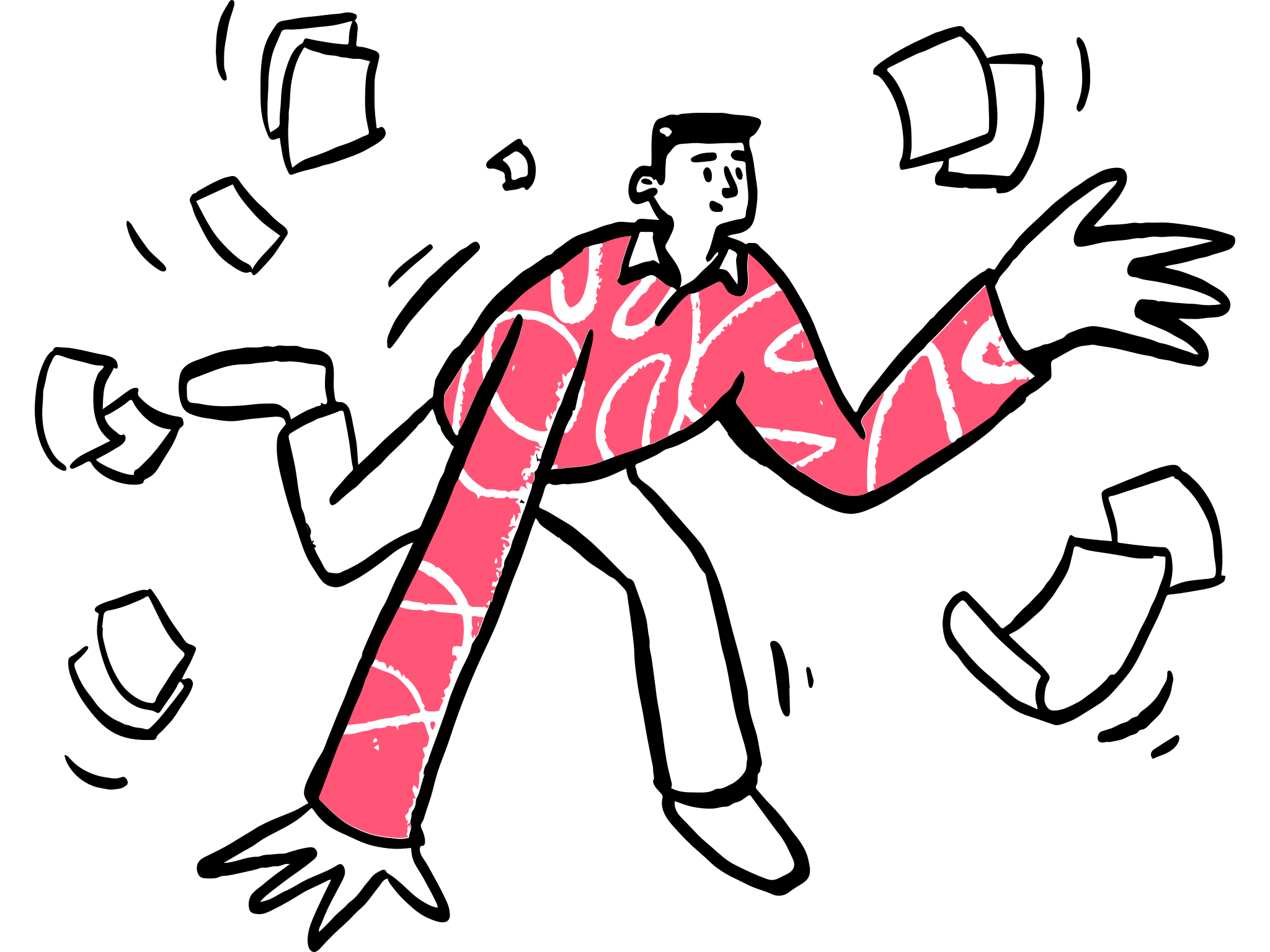Brand vs. Performance Marketing Playbook - How to Convince & Measure Upper-Funnel Impact
Table of Contents (Click to show/hide)









Convincing Stakeholders to Invest in Brand Awareness
The Challenge - Many businesses fixate on short-term ROAS and hesitate to fund top-of-funnel brand campaigns, especially when budgets are tight. It's a familiar story for Aussie marketers, who often face scepticism from stakeholders around investing in brand-building efforts that don't immediately convert. To win C-suite buy-in, we need a compelling, data-backed case that brand marketing is not a cost centre but a growth driver.

In today's article I want to explore why balancing brand and performance marketing is crucial for sustained growth, how to measure the effectiveness of upper-funnel activities, and which strategies best suit the "Exposure" and "Discovery" phases.
Argument #1 - Brand Fills the Funnel & Creates Future Demand
Performance marketing harvests existing demand, while brand marketing plants seeds for future demand. Focusing only on performance means you’re targeting the ~5% of the market actively looking to buy, and ignoring the other ~95% who could become tomorrow’s customers (Source: croudx.com). One marketing VP vividly explained:
“Performance marketing is the gears and brand marketing is the grease… Gears with no grease require huge effort… You need both. Good brand marketing makes performance marketing work better.” Source: reddit.com
In B2B, a marketer lamented that without brand awareness, sales teams waste “the first 20–30 minutes of every meeting explaining what we do” – a colossal waste of resources. Without brand marketing, “there’s literally nothing in the top of your beloved funnel and pretty soon it’s gonna be empty” (Source: reddit.com). In short, no brand = no pipeline. Investing in awareness ensures your funnel stays primed with warmed-up prospects who already know and trust your name.

Argument #2 - Brand Awareness Multiplies Performance ROI
Building brand equity makes all your acquisition channels more efficient. Recent data shows conversion rates skyrocket as brand awareness rises. In a study of 147 brands, those with high awareness (~60% aided awareness) achieved 2.86× higher conversion rates than brands with low awareness (~20%) (Source, listenfirstmedia.com). Even a modest awareness boost from 30% to 40% led to a 43% improvement in performance efficiency (lower cost per conversion).
Why? Because consumers familiar with your brand require less convincing – your ads and promotions “work harder” on them. Indeed, performance media often gets more expensive as you scale, but strong brand awareness offsets rising costs by making each impression more effective. For finance-minded leaders, this means higher ROI on ad spend and lower customer acquisition costs in the long run, thanks to the lift from brand familiarity.
“The stronger the brand, the better performance media performs.” source: listenfirstmedia.com
Argument #3 - Trust --> Brand Search and Then Organic Growth
Brand marketing doesn’t just aid paid media – it fuels organic channels too. When people know your brand, they are more likely to search for it, visit directly, and click your organic results. Google's Trust Patent highlights that user behaviour and trust significantly impact website rankings (in this patent, the user behaviour of site visit frequency is a indicator of the trust factor). A well-known brand naturally attracts more organic traffic, direct searches, and genuine engagement, which translates to better SEO and lower customer acquisition costs (CAC). Branded searches and repeat visits signal to Google that your site is authoritative, boosting your organic visibility. Conversely, if consumers have never heard of you, you’re fighting an uphill battle in SEO and word-of-mouth. Investing in PR, content, and brand campaigns can earn links from trusted sites and positive reviews, further improving your organic search presence.
Bottom line: Brand-building drives free traffic over time – reducing dependence on paid media. (It also tends to attract higher-intent customers who trust your reputation, leading to better conversion rates and even lower risk of “cheap,” unprofitable customers.)
Argument #4 - Brand Investment = Long-Term Profitability
Performance marketing alone is like crack – a quick high that fades if not continually paid for. Brand marketing, on the other hand, builds an asset that compounds. Research by marketing effectiveness experts Binet and Field suggests an ideal marketing budget split of around 60% brand-building and 40% performance marketing (source: razorsharppr.com). The data clearly show long-term brand efforts deliver greater overall sales uplift and profitability. Nielsen research quantifies it: a mere 1-point increase in brand metrics (awareness or consideration) drives a 1-point increase in sales, and even reduces acquisition cost by 1%. In other words, brand investment makes your entire business development more efficient. Finally, consider competitive positioning: if your competitor (e.g. Uber vs DoorDash) has been investing in brand and is top-of-mind for customers, they will capture disproportionate market share and organic traffic – a hard gap to close with tactics alone.
It’s the classic “pay now or pay (more) later” scenario



Framework to Measure Upper-Funnel Effectiveness
Once stakeholders are convinced to invest in upper-funnel marketing, the next question is inevitably: “How do we measure these awareness efforts and link them to profitability?” It’s crucial to set up a structured measurement framework that tracks leading indicators, proves incrementality, and ties brand metrics to financial outcomes.
Define Clear KPIs Linked to Business Outcomes
Start by establishing which brand metrics matter for your business and how they correlate with revenue. Common upper-funnel KPIs include Brand Awareness (% of target audience who know you), Brand Consideration, Brand Preference, Share of Voice (share of media impressions in your category), and Share of Search (share of total category search queries that are for your brand). Each should have a hypothesized link to downstream profit. For example, you might use industry research benchmarks: the IPA finds Share of Search has a 0.83 correlation with market share in the long run. Nielsen data (cited above) ties awareness lifts to sales lifts. Such data can help translate a brand KPI target into an expected sales outcome (e.g. “increase awareness by 5 points to gain ~5% sales” as a rough rule). Set targets for your brand metrics alongside sales targets – this creates organisational alignment that brand health is a leading indicator of growth.
Where to find these metrics:
- Brand Awareness = Serviceable Available Market/Total Addressable Market - use research sites like nextmsc or statista to get the Total Addressable Market data
- Brand Consideration, Brand Preference - use site survey, focus group and in-person customer interview
- Share of Voice - Use tools like adthena, Google Trend
- Share of Search - Use Google Ads
[Search Impression share/ (Search Impression share / Impression share lost due to budget) + (Search Impression share / Impression share lost due to Rank)]
Implement Ongoing Brand Tracking and Lift Studies
To measure upper-funnel campaigns, use a mix of surveys and experiments
Leverage “Share of Search” and Organic Metrics
- Branded Search Volume: Track Google Trends or your Google Search Console data for branded search queries (Tip: Your paid search will show all the brand term variations, use REGEX to create a brand term filter). A rising trend in branded searches often indicates growing awareness and consideration. If you raise your share of search from, say, 10% to 15%, you can expect market share to follow in that direction in time. Also when using Google Trend, use the same comaprision metrics. For example, you were comparing DoorDash, UberEats, Menulog and Hungry Panda when benchmarking, when doing retro, include the same competitors to make sure the metrics are compariable.
- Direct Traffic & Navigation: Monitor direct visits to your website and navigational searches (people typing your URL or using browser bookmarks). These typically increase as brand awareness grows and are a good proxy for mindshare.
- Social Listening & Earned Media Mentions: Track mentions of your brand on social media (volume and sentiment) and press coverage. Upper-funnel efforts often manifest in more buzz – which you can quantify (e.g., number of mentions, engagement on brand posts, referral traffic from PR articles, etc.). I often recommend using "Buzzsumo" but its subscription fee can be insanely high.
- Paid Search Impression Share: Similar concept to "Total Addressable Market", "Serviceable Addressable Market" and "Serviceable Obtainable Market
- we can use Google Ads "Search Impression Share" and "Click Share" to understand our "Serviceable Addressable Market" in search Brand Campaign & Competitor Campaign. Although it's volatile based on your budget & ad ranks, brand campaign & Competitor Campaign is often stable. Use
Impression/Search Impression Share = Total Estimated number of impressions that you were eligible to receive.If the totalEligible Impression and Click Share isincreasing in both Brand Campaign & Competitor Campaign, the delta value can be a useful metric.
Marketing Mix Modelling (MMM) for Long-Term Impact
To connect the dots all the way to profitability, Marketing Mix Modelling is a critical tool. MMM is an econometric analysis that uses historical data (media spend, sales, control factors) to tease out each channel’s contribution to sales. A “full-funnel” MMM approach can explicitly incorporate brand advertising and its lagged effects.
- Use MMM to measure not just immediate sales from ads, but also how ads shift the baseline of sales over time. This is done by integrating brand metrics into the model (sometimes called a nested brand equity MMM). Essentially, you model: Brand media spend → lifts brand KPI (e.g. awareness or share of search) → which in turn drives sales. This two-stage model attributes indirect sales to brand campaigns via the brand equity they build. For example, MMM might find that TV ads don’t show much instant ROI in-week, but they significantly boost brand Google searches and site visits, which then yield sales over several months – capturing the true ROI.
- Include Adstock/Decay in measurement: Brand effects are not instantaneous; they accumulate and decay gradually. Ensure your MMM or analysis accounts for “adstock” – the lingering impact of advertising. (Adstock is often modelled as a decay factor, e.g. 80% of an ad’s impact carries into next week, then 64% the week after, etc.). The chart below illustrates this concept: the gray bars show periods of ad spend and the blue line shows the cumulative adstock effect. Even after active spending stops, the ad impact lingers and continues driving conversions for weeks (blue curve stays elevated)

- Financial Lens and Feedback Loop: Finally, connect brand metrics to financial outcomes in your reporting dashboards. For example, track ratio of branded vs non-branded customer acquisition cost, or changes in customer lifetime value over cohorts who came in during high-brand-investment periods vs low. Often, you’ll find that as brand equity grows, CAC goes down and LTV goes up – meaning better unit economics. Make these links explicit in presentations.This helps finance leaders see brand spend as a lever for improving profitability, not just an expense
Framework Summary
- Brand Surveys/Trackers – measure awareness, consideration, etc. (long-term brand equity build, tracked quarterly).
- Brand Lift Experiments – measure immediate recall/awareness uplift from a specific campaign (short-term campaign impact).
- Share of Search & Branded Traffic – gauges active interest in brand (leading indicator of market share, highly correlated).
- Marketing Mix Modeling (with adstock) – quantifies each channel’s total contribution to sales, including lagged effects (the “holy grail” for true ROI).
- Incrementality Tests – prove causal impact in controlled settings (to validate the models and address skeptics).
- Financial Outcome Tracking – ties the above to dollars (CAC, LTV, market share, revenue growth).
By using this framework, you can confidently answer the C-suite’s questions: “Is brand marketing working? How do we know? What is the ROI?” You’ll have data showing that raising awareness leads to measurable improvements in conversion efficiency, organic growth, and sales over time.
Upper-Funnel Marketing Channels Measurement & Best Practices
Integrate multiple channels for a surround-sound effect. Upper-funnel campaigns work best when channels reinforce each other – e.g., someone sees your sponsored content online, then a billboard, then an influencer post – each touch builds familiarity (“I’ve heard of {Brand} somewhere”). Remember the adage:
“Only after you’ve built awareness and interest should you invest in heavy conversion tactics. Otherwise, you’re just yelling into the void.”
By following this playbook – making the case with data, measuring rigorously, and executing across the right mix of upper-funnel channels – you can effectively convince stakeholders to support brand initiatives and demonstrate their value. In doing so, you’ll build a strong brand foundation that powers more efficient growth across all marketing efforts.
References
- Why performance marketing alone won't save your brand - CroudX
- Brand vs. Performance Marketing - Reddit discussion
- Diving In: Performance vs. Brand Awareness - ListenFirst
- Google's Trust Ranking Patent Shows How User Behavior Is A Signal - Search Engine Journal
- Binet and Field's 60/40 Marketing Rule - Razor Sharp PR
- Google Modern Measurement Playbook (2024) - Google
- What is the Adstock Effect? A Guide for Advertisers - Arima Data
- Demand-Creation vs. Demand-Converting Marketing - SparkToro









